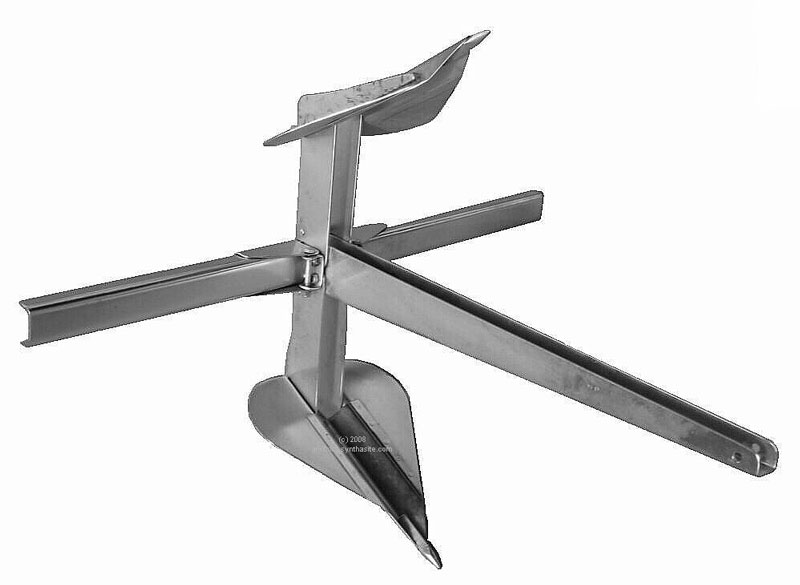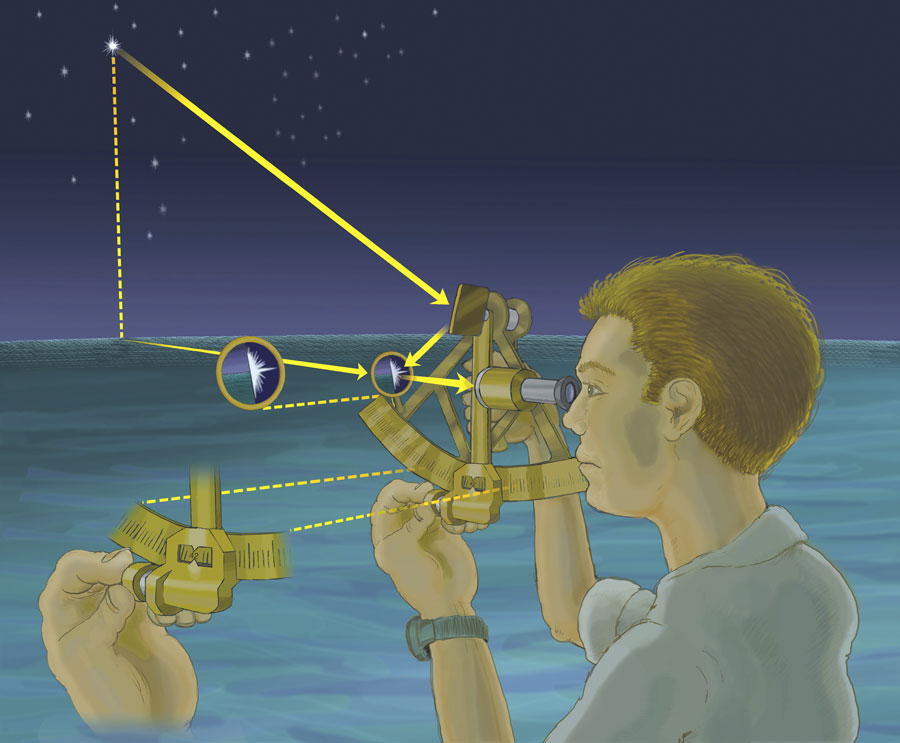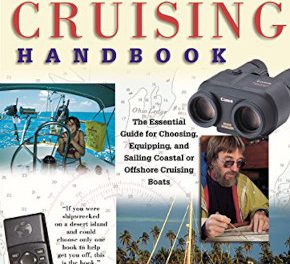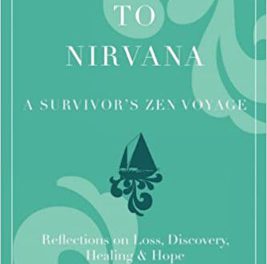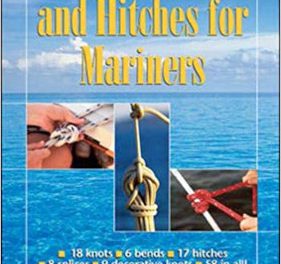LINE DRAWINGS OF A NEWPORT 30?
I have a dear old friend who owns an old Newport 30 MK III. I have been trying to get my hands on a set of line drawings, so I can make him a half-model of his beloved Summer Place. Is there anybody among The Dogwatch readership who can help me find these drawings? My friend is getting to the stage where he lives on old stories and doesn’t get out much due to advancing years and I think sitting in the arm chair would be made a lot easier if he could gaze at his beloved boat in the form of a half-model. Many thanks. Please contact me at glennwakefield@shaw.ca
–Glenn Wakefield, Victoria, British Columbia
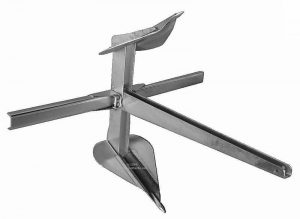 ANCHORS REVISITED
ANCHORS REVISITED
I just read the February issue of The Dogwatch. The next time you’re stirring the pot on anchor choices (a subject as likely to provoke violence as politics or religion), how about asking whether anybody else uses an old Northill? I’ve got one as a backup on my Seafarer Polaris, a 26-foot sloop. The Northill originally served as one of two anchors for a four-barrel swimming raft in Lake Huron’s Saginaw Bay, a tough job.
–Chris Campbell, Traverse City, Michigan
Interestingly, the Northill was the new-generation anchor of its day (its day being the 1930s). It was made in Los Angeles and was standard equipment aboard Pan American Airways because of its relatively light weight. –Michael Robertson
Image courtesy of anchors.synthasite.com
Regarding the recent The Dogwatch discussion on anchors: maybe New Englanders know something the rest of us don’t. Of all the replies on anchors, only two respondents, both from New England, spoke glowingly of the fisherman or yachtsman anchor. No anchor from any maker is good for all bottoms, but the yachtsman comes closest. It is particularly good in reedy conditions as you will find in Northeast harbors. I am guessing that people don’t like this anchor because it is difficult to store, but the modern ones come apart for flat storage. Two companies still make them: Kingston Anchors of Kingston, Ontario, and J.M. Reineck & Son of Hull, Massachusetts.
–William Winslow, New York, New York
I was surprised that there were any — let alone two — die-hard Fisherman anchor advocates to emerge from this narrow field of respondents, but pleased that they did. In the mid-1990’s, I saw Alvah Simon speak in Ventura, California. This was before North to the Night was published and before he began his relationship with Cruising World. He spoke about his trip around Cape Horn and cruising the Beagle Channel of Chile and Argentina. During that talk, he sang the praises of the Fisherman anchor. Accordingly, when I set out (on a much more modest voyage) as a neophyte cruiser in 1996 aboard a Newport 27, I lugged with me a way-too-big-and-heavy Fisherman anchor, all the way down to Panama and up to Florida. I never used it, but, by golly, if Alvah sang its praises, I was going to have it aboard. –Michael Robertson
RECKLESS WITHOUT CELESTIAL KNOWLEDGE?
Last month I put it to the readers about my willingness to cross an ocean without knowledge of celestial navigation, with a total reliance on GPS satellites and the corresponding electronics aboard. Reckless or totally reasonable? The U.S. Naval Academy has made it clear where they stand, but I wanted to hear from you… –Eds.
I’m a big fan of CelNav, and fiercely proud of my own meager skills at it, but I’ve come to believe it is rapidly coming to the end of its practical usefulness. (Readers, Henry Cordova is the author of “Sextant Reflections,” an excellent article from the July 2014 issue of Good Old Boat. Read it here. –Eds.).
It’s unlikely that the GPS constellation will fail, except in the case of a war, alien invasion, or some highly unlikely astronomical event, such as a hundred-year solar flare or nearby supernova. The major hazard is a mechanical failure, and you seem to have protected yourself adequately by adding sufficient redundancy. I would have had no qualms about crewing on your voyage, and I would have left my sextant at home. Two GPS units, including a handheld with independent battery power, would be my bare minimum. A second handheld and a Davis sextant and Nautical Almanac and you are bulletproof. I’d add a spare bearing compass, too. Keep a compass log, and put your spare handheld in a Faraday Cage (a tin box, to protect it from EMF and lightning strike).
But the real advantage of understanding CelNav isn’t so much to backup electronics, but the confidence that understanding imparts, knowing that you can rely on all the skills you pick up mastering the sextant: piloting, dead reckoning, chartwork, plotting, timekeeping, cartography, and astronomy. For example, with a cheap plastic sextant and a nautical almanac, you can do latitude sailing, which was good enough to enable Captain Cook to find Hawaii. You don’t need a chronometer or sight reduction tables, a calculator or a star finder, or any of the other CelNav paraphernalia. You just need a noon sun or stellar meridian crossing once a week or so to get you home.
What I found troubling about your letter was your reliance on PCs, electronics, and digital chart data. It’s a great convenience to have that sort of thing aboard, but I believe it also gives you a false sense of security, and is a recipe for panic should it all go south on you. The risk is greater if all that gear relies on one power source. Remember, if you haven’t got one aboard, it can’t break and let you down when you need it the most.
IMHO, the easiest way to navigate is with lat-lon data from a handheld GPS plotted on a paper chart. This method also prepares you to continue with a proper DR track on that chart should electronics fail. Too much gear just gets in the way and you’ll spend all your time debugging your tools instead of driving the boat. The DR forces you to develop situational awareness, to keep track of where you are instinctively. It gives you nautical intuition, a sixth sense, one that allows you to say “Hmmmm, that doesn’t look right, something’s wrong, I’d better do it again.” You don’t learn that by just staring at a screen. Even if you go several days between fixes, or if they are of poor quality, you’ll still know your rough location and be in tune with how the current and wind are influencing your course.
Having said all that, I think you should take the time to learn CelNav. Even if you never use it, some sub-set of CelNav knowledge may someday become vital intelligence. For example, learning how to read a star chart is the only way you can compensate for total compass failure. (Yes, it can happen; my hockey puck once froze up on me.)
–Henry Cordova, Tamarac, Florida
If you were reckless crossing the Pacific with no celestial navigation knowledge, then I am reckless every time I fly my 767 over the pond to Europe, relying on triple-redundant GPS. In fact, every airliner out there relies solely on GPS not just for course navigation, but also for flying some approaches. In my 16000+ hours of flying, I have yet to experience a major navigation error when using the systems we have and the procedures we have to use them. Aviation gave up celestial navigation decades ago, in favor of more modern means of navigation and it has served us well. The US Navy may be training their ship-based navigators in celestial navigation, but their aircraft, as well as those of the Air Force, still rely solely on GPS.
I find that many sailors are loath to move into the modern era, as if it is some sort of witchcraft. They cling to their sextants and spout forth opinions that anyone who doesn’t know or practice celestial navigation is stupid, crazy, or both. Thank God those people are not running the show in my profession. We would still be flying piston-powered propeller-driven aircraft if that was the case.
–Brett Anderson, Captain, United Airlines
Don’t leave home without [celestial navigation knowledge]. The noon site is all you need for lat and lon, very easy to learn. Use Mary Blewitt’s manual. Get a Davis sextant, the Daily Nautical Almanac, and an accurate timepiece and you’re in business.
–Thom Harris, Annapolis, Maryland
I have used celestial navigation during the 1970s, 1980s, and early 1990s as my sole method of navigating long passages, so I’d like to comment.
First, relying solely on GPS does not represent a great risk in this day and age. With multiple GPS receivers on board, there is a very low likelihood of losing this capability during a passage. Yet, take electronics to sea and things can go wrong. For this reason, some cruisers do worry about losing GPS capability and hence the interest in celestial navigation does not seem to be dead.
On a return to the South Pacific last May, my crew (Adva) and I had all the gear on board to navigate without GPS if we had to. This included my Freiberger sextant, two HP calculators for Almanac data, and sight reduction as well as some back up tables for emergency use. Finding an island group such as the Marquesas does not require high accuracy, so even primitive equipment would suffice in an emergency. If you can determine your latitude, you could run westward along the desired latitude and find the islands. Anyone who has gained real understanding of the principles involved in celestial navigation can improvise with primitive means and not be lost. For this reason, I feel that it is still worthwhile to acquire an understanding of celestial navigation, just to have a confidence that you can still reach your destination without GPS.
Especially in the South Pacific, celestial navigation works well; there is a lot of sun and mostly clear nights. There are many bright stars in the southern sky; Venus and Jupiter are often very helpful too. On our North Pacific passage from Hawaii to Canada, we had many cloudy days when approaching the coast so a landfall without GPS would have been a challenge. Sun observations are still often possible in cloudy conditions.
For use onboard Waterhoen, I put together a summary of how to navigate with primitive means in case of failure of the electrical systems on board. This summary includes some of my experiences with the different sextants and calculators I used over the years.
–Alfred Gort, Waterhoen (located in Raiatea), Loveland, Colorado
So long as you were competent in reading and interpreting the info you got from the instruments you had aboard, you were not foolish. I’m assuming you understand and can keep a running dead-reckon (DR) fix and that your cruise was near shore or coastal rather than offshore. Any competent navigator can safely follow a course, plot DR points and get there without a sweat.
–Charlie Miller, Erie, Pennsylvania
My husband and I are old-school US Power and Sail Squadron (USPS) members and have taught USPS classes in safe boating. We are coastal cruisers on our CT41 ketch. We have a Garmin chart plotter with GPS aboard for a trip we took from Puget Sound to Panama. We always relied on paper charts, our two compasses, and an older GPS without chart data. We have a hand-held GPS as back up. We entered waypoints and trusted our GPS, but we also used distance, speed, and time.
We believe that cruisers need to know the basics of calculating their direction, speed and distance over time. Satellite phones, computers, and chart plotters are nice, but they all require power. Paper charts and a good timepiece are still fundamental and celestial navigation is an extra for people who want to learn the world’s oldest navigation system.
–Lorraine and Roger Atkins, Black Dog II, Seattle, WA
If GPS is sabotaged due to war, you might be better off wandering around in the ocean anyway. With a good compass you can follow a relatively straight course until electronics are restored or you hit land.
–Paul Clegg, Nanaimo, British Columbia
Here are some general thoughts to consider:
- Learn to perform DR navigation based on your last-known GPS fix; apply compass heading (converted to true heading for plotting on your chart), time run since last position (GPS fix for first DR position, or last DR position), and speed (from a knot meter) to compute nautical miles run. Mark this point as a DR on your chart (use a small circle symbol). Repeat as needed to track your progress until landfall or recovery of some GPS capability. Realize that the longer you perform DR navigation, the less accurate your position due to the unknown drift due to currents and wind.
- Carry paper charts that will allow you to plot DR positions for your intended route(s).
- If you have radar, learn to take a radar fix to determine your position. Plot the radar fix on your chart and use that fix to restart DR navigation until another radar target is available or you regain GPS capability.
- If sailing in water depths that are readable by your depth meter, cross-check the depth reading (meter versus chart value) with your radar fix or DR for another cross-check on position accuracy.
- Learn celestial navigation and buy a sextant. The Astra III B is a reasonably-priced alternative; a plastic sextant is not a viable option. You want a somewhat-precision instrument to validate all the effort you will put into the computations and sights. Be sure to have a current almanac and the appropriate HO 249 volume to allow computations. The only math required is addition and subtraction. Make life easy for yourself and plan to shoot the sun, and easily identified stars appearing at dawn or dusk when the horizon is visible. (Don’t shoot the moon unless you are comfortable with the changes in computations due to the moon’s difference in arc travel from the sun and stars.) The other key to success is obtaining a comp sheet that is easy to follow. I have my own developed from my experience as an USAF C-141 navigator; I used a sextant during over-water flights when radar targets and LORAN LOPs were not available.
I hope this info has been of value.
–Neal Doten, San Francisco, California

